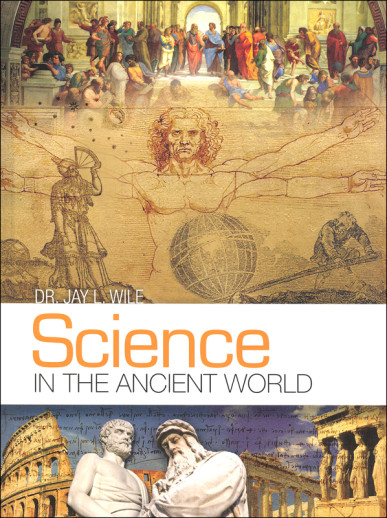We use cookies to make your experience better. To comply with the new e-Privacy directive, we need to ask for your consent to set the cookies. Learn more.
Science in the Ancient World Text
Unless you are using this course with someone else and they have the Helps & Hints you may want to order the set not just the textbook
Science in the Ancient World is the second book in a hands-on, multilevel elementary science series that introduces scientific concepts using history as its guide. Because each lesson is built around an activity or experiment, it is engaging for all K-6 students. In addition, there are three levels of review for each lesson, so the parent/teacher can choose the depth at which each student is expected to grasp the material. The course contains roughly 90 hours of instruction, 35 of which are composed of hands-on activities.
The course covers the scientific work of natural philosophers who lived from about 600 BC to the early AD 1500s. It concentrates mostly on what these ancient scientists got right, but it does spend some time discussing what they got wrong, because even the mistakes that scientists make can sometimes advance our understanding of the natural world. Of course, when the students are taught something that is now known to be incorrect, they are made aware of this fact!
Because the course covers science as it was developed, it covers a wide range of topics including human anatomy, medicine, optics, heliocentrism, geocentrism, sound, music, magnets, how steam is used to generate power, the motion of objects through a medium, combustion, levers, pulleys, plant growth, plant anatomy, tree ring dating, the atmosphere, astronomy, the basics of graphing, plastics, density, water flow, friction, and erosion. Throughout the course, students learn that most of the great scientists who lived from AD 500 to the end of this time period were devout Christians who did science because they thought they could learn more about God by studying His handiwork.
Science in the Ancient World, is divided into six chronological time periods: Science before Christ (570 B.C- 370 B.C.), Science Before Christ (424 B.C. - 120 B.C), Science Soon After Christ (40 A.D. - 200 A.D), Science in the Early Middle Ages (490 A.D.-1368 A.D.), Science in the Late Middle Ages (1320 A.D. - 1519 A.D.) and Science in the Early Renaissance(contributions of Leonardo DaVinci). The great discoveries of early natural philosophy and science are studied through the brilliant minds of Pythagoras, Hippocrates, Plato, Aristotle, Archimedes, Galen, Roger Bacon, and Leonardo DaVinci along with many others. Topically, students will be introduced to human anatomy, medicine, optics, sound, music, magnets, plant growth, the atmosphere, density, water flow, erosion and more.
Printed Student Notebooks for the Older and Oldest Student include the review activities and space for the student to respond. A convenient Lab Kit provides most items used for hands-on activities to better organize your day.


Needed for a class at our co-op
Using in a co-op class. Required text.
We used Science In The Beginning from this curriculum last year and it was amazing! Both children were engaged in the science experiments and had an age-appropriate workbook to complete following the lesson.
Met this author and he is GOOD.